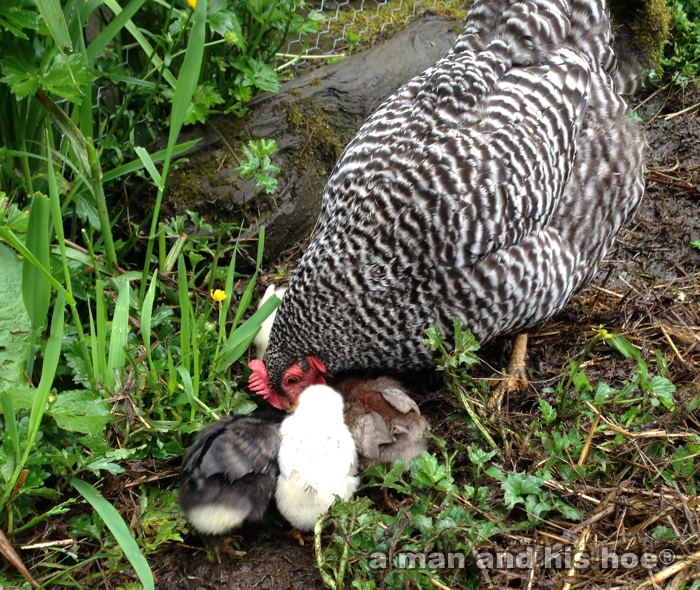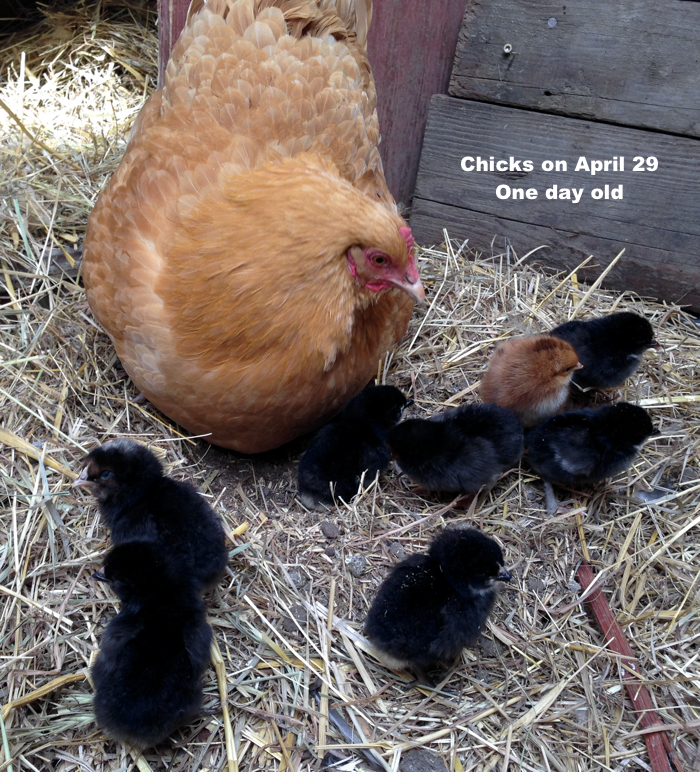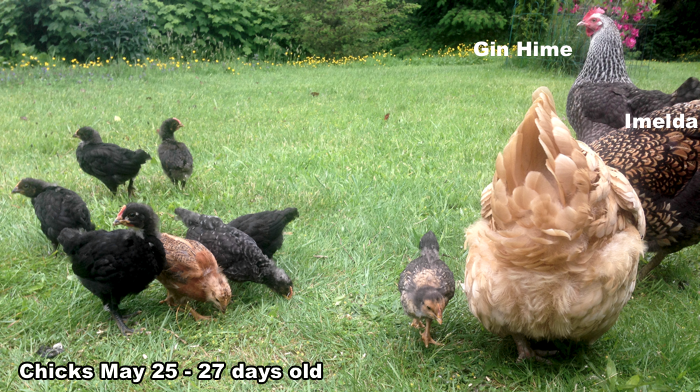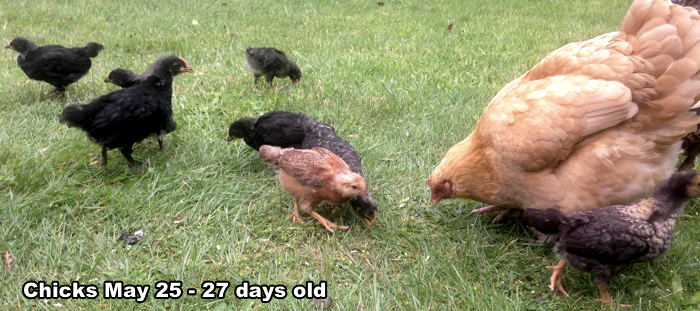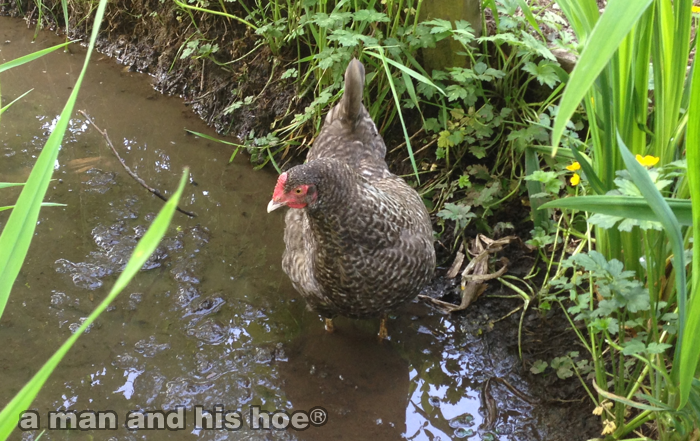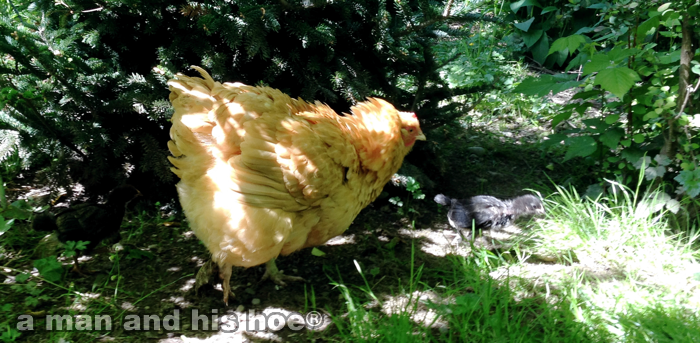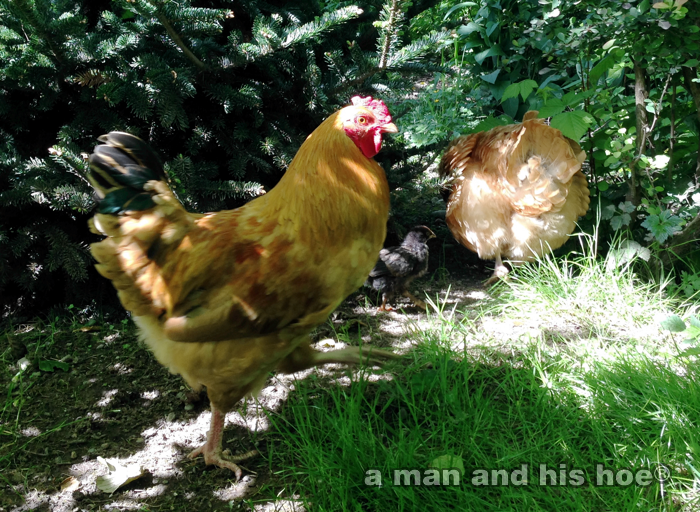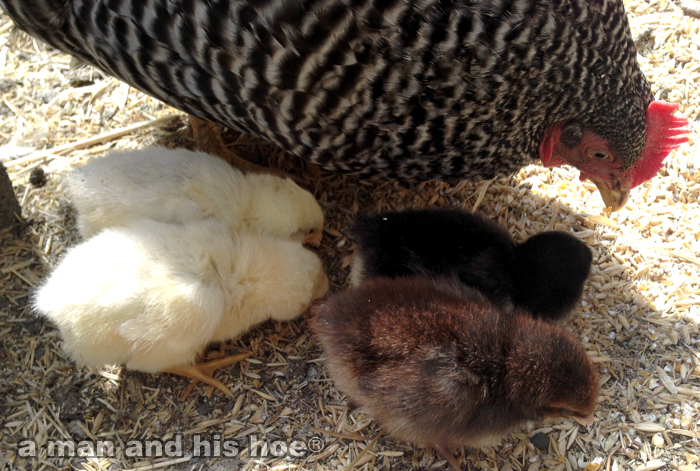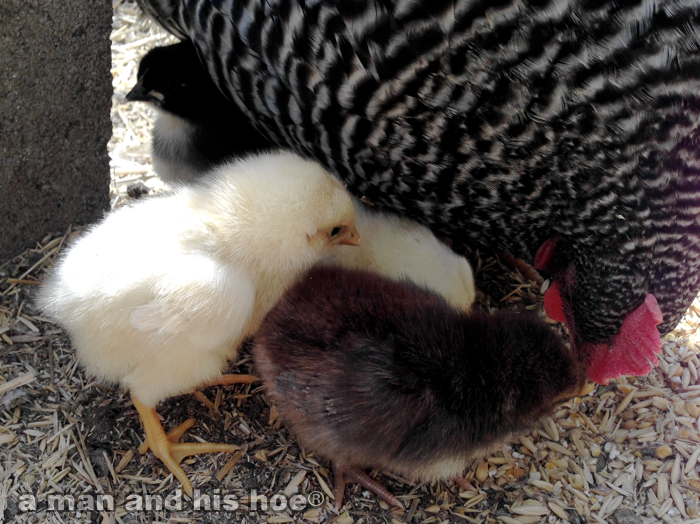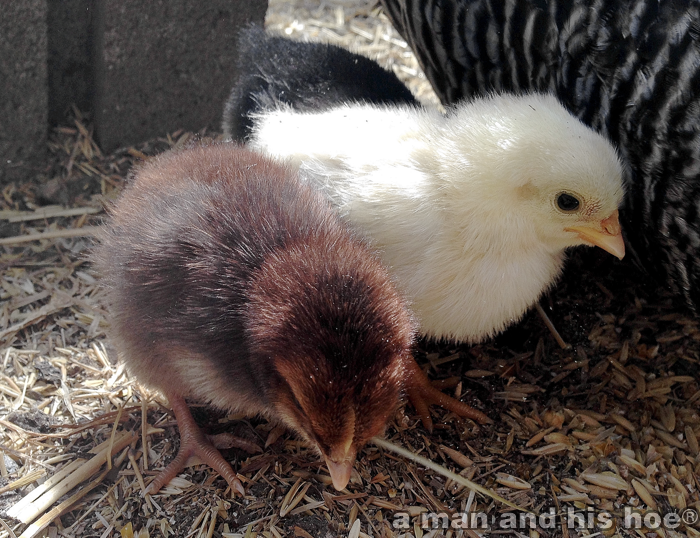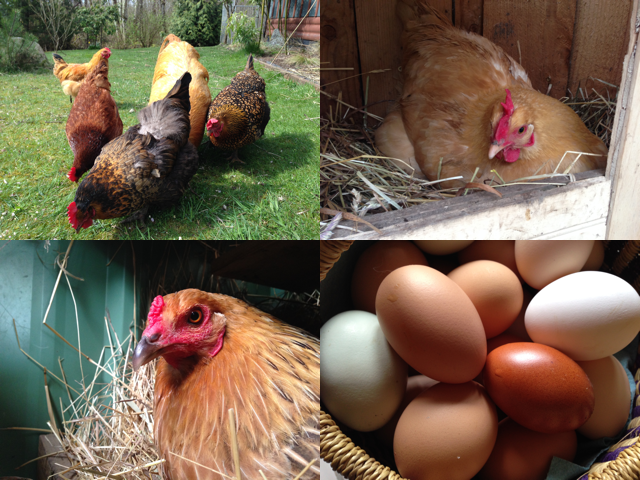
Looking at the peaceful pictures of roosters, hens and chicks at a man and his hoe®, it’s easy to get lulled into thinking that this is how many chickens spend their lives, happy and carefree. If you want spectacular eggs, this is what it takes.
But the truth of how eggs are really produced is not so idyllic. According to the American Egg Board, there are roughly 280,000,000 egg laying hens in the US and they lay 75,000,000,000 eggs each year, about 10% of the world egg production. Almost none of these egg laying hens have the a man and his hoe® experience. A tiny percentage of them have something approaching what the chickens here have. Sadly, according to NPR, 90% of egg laying hens in the US live out their lives in wire cages. Most of the rest spend their lives in very crowded, cage-free hen houses.
Today, I came across an article from Australia at Australian Broadcasting Corporation, reminding me again just how dreadful most egg production is. When you buy inexpensive eggs at Walmart, Costco, and most any supermarket, those eggs were most likely produced in a facility similar to that pictured below. In these battery farms, the hens spend their entire lives, four to six in a small wire cage. They never get to snuggle down in a soft, straw nest to lay an egg in peace. They never get to sun themselves under a blue sky. They never get to roll around in the dirt. They never get to do the things chickens want and need to do.
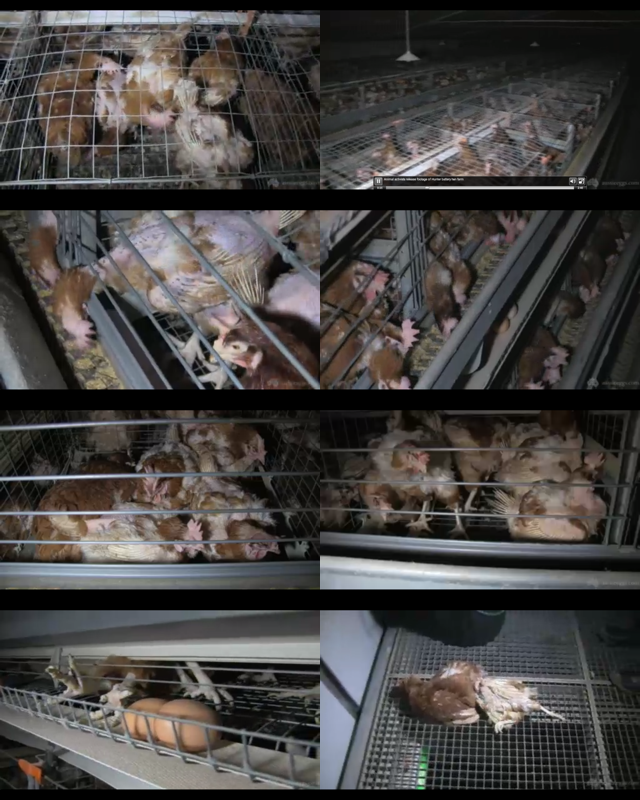
The result is billions of inexpensive eggs, but at an incredible cost to the hens. There is also a tremendous human cost. First, to the egg farmers who must face the unspeakable suffering they inflict on the tens of thousands of chickens under their care. It’s hard to imagine that farmers doing this do not incur an emotional cost.
Then there is the cost to everyone who eats these eggs. Can it possibly be healthy to eat eggs produced by hens who live in such dreadful condition? This type of egg production makes people believe that it is possible to produce good food cheaply, but when it comes to eggs, that is a lie. Creating eggs worthy of human consumption takes a lot of space and time. To create an egg worth putting in your mouth, a hen needs to spend her day outdoors, free to go wherever she wants to. She needs to be able to scratch in the dirt for earthworms and bugs. She needs to be able to roll around in the dirt. She needs to be able to soak in the sun. And she needs a clean, quiet nest to lay her great egg.
So when you buy your eggs, demand eggs that are worthy of you.



